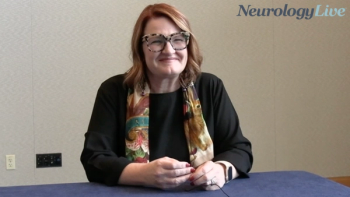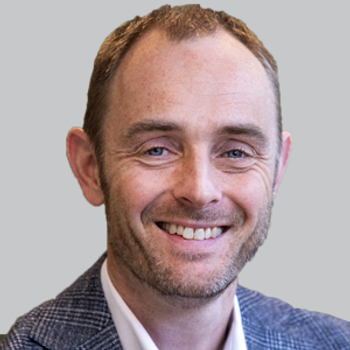
Live Reactions From AES 2021: Trends, Encouraging Research, and Expert Presentations
Leaders in the epilepsy space provided their thoughts on the most promising aspects, initial takeaways, and dominating conversations at the 2021 American Epilepsy Society annual meeting.
After a year in which most of the world turned virtual, a palpable buzz could be felt in the air as those in the epilepsy field were welcomed back in-person to the
NeurologyLive® sat down with several thought leaders at the meeting to get their reactions to the meeting, as well as what research, noticeable trends, or presentations excited them, and the irreplaceable feeling of collaborating and building friendships in-person. Check out their pooled thoughts below.
Darcy Krueger, MD, PhD
Director, Tuberous Sclerosis Clinic, Cincinnati’s Children’s Hospital
One of the things is that the COVID-19 pandemic has certainly created challenges. Being back in person has allowed me to see a breadth of research that’s going on. During the pandemic, we get stuck with in our own circles. That’s been good in the sense of the work that I’ve been working on and the collaborations that I have been on which were not slowed down by the pandemic in any major way. We’ve continued to move forward.
Coming here to the meeting, I get to see what other people likewise have been doing through this pandemic in areas that I’m not specifically focused on. It generates ideas for what I can do. Now that’s different. It opens up new opportunities to say, “hey, I should talk to that person and see what we can start to put their expertise with my expertise in new directions.” That’s the value of this meeting. What I really appreciate from this is that work is still moving forward. COVID didn’t stop us as we continue to move forward, but now we also get to branch out again.
Imad Najm, MD
Director, Epilepsy Center, Cleveland Clinic
I’m seeing that every meeting I come to, which has been for more than 25 years, one of the most important things that we get from a meeting like this, besides the knowledge that we acquired, is that we take the pulse of the field. And every year or 3 to 5 years, you see something that the community is coalescing and focusing around. For this meeting so far (as of Dec 4), the most important things are one, artificial intelligence, which people are starting to talk about and is still in the nascent phase.
Another that is becoming more prominent with an increasing number of case studies and early inroads to this, is genetics and gene therapy. Case and point, look at Dravet syndrome, for example. Five years ago, we were talking about how do we understand this disease? What are the genetic changes as a syndrome? What are the clinical characteristics? What is the spectrum of Dravet with the SCNA1 mutation? You can have a normal person with febrile seizures for example, all the way to the devastating classical Dravet syndrome, and almost for the same mutation. Now we’re starting to talk about gene therapy for these patients. That’s exciting. The theme here, which I see in the next 3 to 5 years, is that I see gene therapy, genetics, and the field of machine learning and artificial intelligence continue to expand and hopefully expand in a way that will excite all of us to a point that we can translate it into clinical practice.
Veronica Hood, PhD
Scientific Director, Dravet Syndrome Foundation
This is my first time doing this in-person, last year was actually my first at all and it was virtual. I’m still impacted the same as the virtual event in that this is a rare disease, Dravet syndrome, is talked about so much here. While it’s a rare disease, it doesn’t feel that rare when I see it popup at so many symposiums, posters, and talks. We’ve had many people coming by our foundation’s booth and it’s just exciting to see so much focus on this community and advancing the research. There’s exciting disease modifying therapies that are hitting the clinic and we’re seeing the early results from clinical trials. We’re seeing other trials that are getting ready to start, and then so much exciting preclinical work developing alternative pathways to other disease-modifying therapies, not just for this DEE [developmental ecenphalopathies], not just for this neurodevelopmental disorder, but all the DEEs, all of these early childhood epilepsies that the need is so great in. I’m excited for what the future holds for all of these children and their families.
William Rosenfeld, MD
Neurologist, Comprehensive Epilepsy Care Center for Children and Adults
The most important thing so far has been to see my colleagues live again and have discussions in the hallways, because just as much of the meeting is the passing of information and friendship along the way. We’re learning about some of the new drugs that are coming out, we’re starting to talk about that 75% to 100% seizure reduction ranges, etc. Those are all aspects that we’d like to see. There are intriguing new things on all ends in terms of genetics as well. Have we come as far as we should? No, but we’re improving with our markers and genetic markers. We’ve got to make sure that translates into fully helping people, and it will over time. Are there things that we need to work on like epileptogenesis and avoiding seizures to begin with after stroke, head injury, etc? That would be wonderful. We haven’t quite gotten there yet, but I think we’re moving in the right direction.
Jessica Fesler, MD
Staff Epileptologist, Epilepsy Center, Cleveland Clinic
I love everything. It’s exciting to be with a bunch of like-minded people that are trying to advocate for patients and want to push the needle forward, move the space forward, and not accept status quo. That’s always the most exciting thing. I love education, so I’ve been in a lot of education sessions, and I like seeing the newer, younger people, and people excited about how we are going to teach the next generation of epileptologists.
My favorite session has been Dr. [Page] Pennell’s Women in Epilepsy session. It’s a certain interest of mine and I love the way she presented the data. She gave a heartfelt story, brought a patient in who also shared her story, and it was very moving. She’s one of my heroes. I loved hearing her speak and the way she presents solid data that’s changed the way we’ve cared for women with epilepsy over her career. That’s been my favorite session.
Danielle Andrade, MD, PhD
Medical Director, Epilepsy Program, University Health Network
First of all, I’m happy to be here in-person, seeing people, getting the interactions, even though AES has done a wonderful job keeping the conference online last year, but the human interaction is very important. Overall, I’m happy with that and also with the way the AES has been in the forefront of the developments in genetic epilepsies. We’re seeing wonderful talks here, wonderful work that’s being done by amazing people. It’s great to be here.
Transcript edited for clarity. For more coverage of AES 2021,
Newsletter
Keep your finger on the pulse of neurology—subscribe to NeurologyLive for expert interviews, new data, and breakthrough treatment updates.


































